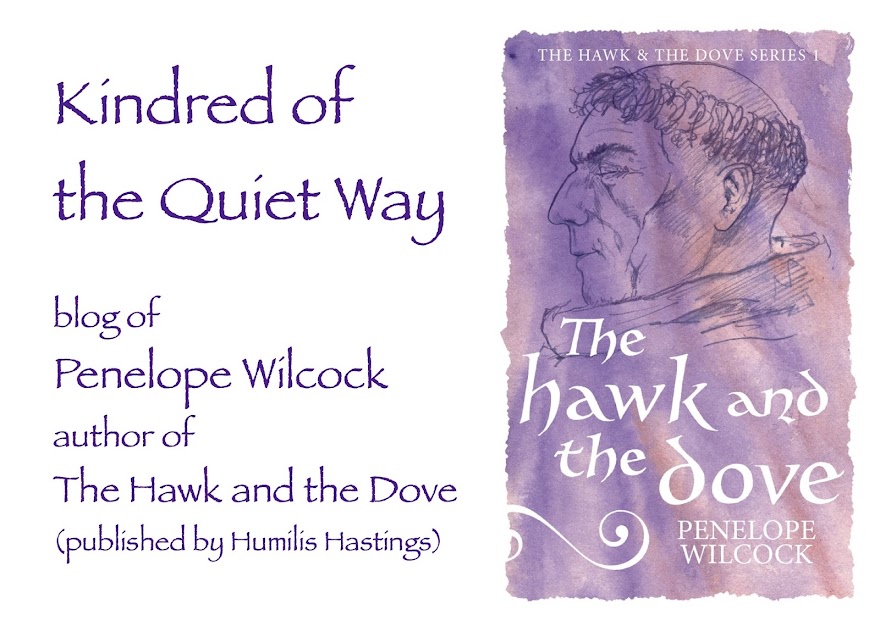At last we have this available on Amazon in both paperback and e-book.
It's taking us a while to gradually bring all the first Hawk & Dove series out under our own imprint (Humilis Hastings). The work is slow and patient, requiring multiple checks, because of the changes in formatting needed as we take the text from the files the original publisher used, re-format them to something we can work with, edit and proofread, then format again to upload for paperback and (different format required) for e-book. Each time the format changes, oddities occur in the text — eg the paragraph indentation slips or the italics vanish — so the text has to be proofread and corrected again.
Happily, both Jonathan who works on the paperback and creates the cover from Alice's and Hebe's artwork, and Tony who prepares the e-book, are meticulous and thorough. Without them, you would not have this book.
Anyway, for those of you who are collecting this new edition, or reading it for the first time, here it is.
As this book has been through different editions with different publishers (originally Monarch in England, then Good News in America, then Lion Hudson in England, finally SPCK), most of the tiny errors that slip through in a text had been spotted and nuked. But in editing this time I wanted to correct a few historical errors occurring from simple ignorance when I first wrote the book at the beginning of the 1990s. At the time, though I knew that such vegetables as potatoes and tomatoes were not available in the 14th century, I assumed that other root vegetable were — for both human and farm animal consumption — but they were not. The introduction of roots for cattle feed in the eighteenth century revolutionised farming and human wellbeing. Until then, both animals and humans were dependent on grain to see them through the winter, and in a hard year there wasn't enough to go round — especially in the 14th century as it happens, when they had a lot of wet winters and the grain harvests suffered.
So the practice had been to slaughter the animals they could spare at Martinmas (early November), when there'd be a big feed-up followed by lean days through the winter as milk gradually dried up and egg yield dropped off and the grain stores eroded. They had dried beans, of course.
Once roots (turnips, beet etc) became a thing, there was more food to go round both humans and cattle, so slaughter for food could be more measured, not all at one go at Martinmas.
The food of the fourteenth century, then, was mainly animal products (meat, poultry, eggs, milk, butter, cheese), grain, fruit, and green vegetables. We read of garlic, onions and leeks being eaten, but I suspect they don't mean what we take them to mean — the kind of fat, round garlic and onions we buy at the supermarket now, and the hefty leeks.
If you look up three-cornered leek, also known as white-bells, also known as three-cornered garlic — Allium Triquetrum — you find these:
The whole thing is edible and tastes like spring onions (scallions US), but with a somewhat milder taste. They're easy to grow, spreading like wildfire if you plant them in the garden.




2 comments:
love these new covers! i suppose that means that i should start reordering the series all over again, huh?
Indubitably. ❤️
Post a Comment